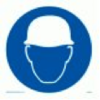BSC Health & Safety Flashcards
What is a hazard?
The potential to cause harm
What is a risk?
The likelihood harm will be caused
E.g. high/medium/low risk
What is the best way to control a hazard?
To eliminate it (or remove it)
What are the most common causes of accidents in the workplace?
Slips, trips and falls
What should you do if you have an accident at work?
Tell the health and safety representative who logs it, so it can be investigated
What is the purpose of a risk assessment?
To identify the control measures
Give an example of a control measure used in a lab e.g. for handling dilute acids
Wearing goggles or lab coats
What is the point of a control measure?
To remove or reduce risks
Who enforces Health & Safety at work?
The health & safety executive (HSE)
How can the risk of injury at work be reduced?
Behave properly
Use equipment properly
Use protective and safety equipment
Follow procedures e.g. lab rules
Give an example of ‘behaving properly’ in the lab
No running, no eating or drinking
What does PPE stand for?
Personal protective equipment
Give an example of PPE on a building site
Hard hats, steel capped boots, gloves etc…
What can cause accidents at work?
Human factors like carelessness & tiredness
What occupational factor may contribute to work place accidents?
Manual handling e.g. lifting loads that are too heavy
How can a machine cause injury?
By entrapment, entanglement and ejection
Who is responsible for providing health & safety information at work?
Employers
What could happen if serious health & safety regulations are not followed properly at work?
Employers could end up in court
What does this mean?

Oxidising – may or may not burn itself, but will release O2 contributing to combustion
What does this mean?

Toxic – can cause death by being swallowed, breathed in or absorbed by skin
What does this mean?

Flammable – catches fire easily
What does this mean?

Corrosive – attacks & destroys materials
What does this mean?

Danger to the environment – a threat to living organisms
What does this mean?

Hazard – can cause skin to go red or blister
What is the aim of first aid?
To stop injuries and medical conditions from getting worse
How do you treat minor burns/scalds?
Run under cold water for 10 minutes
What should you do if someone gets an electric shock?
Do not touch them!
Turn off the electricity, call for help and phone for an ambulance
What is the emergency action for cuts?
Run under water
What is the emergency action if there is a object like glass in the wound?
Do not remove it. Leave the object in and seek medical attention
What is the emergency action for chemicals in the eye?
Use an eye wash and flush with sterile water for 10 minutes and seek medical attention
What can you find in the workplace to prevent the spread of fire?
Sprinklers
Fire extinguishers
Fire doors
Fire blankets
What escape route from a building should you never use in the event of a fire?
Lifts, escalators or revolving doors
How do fire doors slow down the spread of fire?
They act as barriers and automatically close behind you
What are the 4 types of fire extinguisher?
Water
Carbon dioxide
Foam
Dry Powder
Name the 4 colour codes for each type of fire extinguisher?
Water = red
CO2 = black
Foam = cream
Dry powder = blue
What types of fire should a red (water) extinguisher never be used on?
Electrical and fats / oil (explodes)
What type of fire is a black (CO2) extinguisher used for?
Electrical equipment, liquids, wood, paper, coal
What type of fire is a foam extinguisher used for?
Wood, paper, coal, liquids
What are electrical devices fitted with to reduce the risk of electrical fires?
A fuse
If you discover a fire at work – what should you do?
Set off the fire alarm, exit via the fire escape route and do not re-enter the building
Who enforces health & safety in the workplace?
Health & safety officers (HSO)
What is noise?
Unwanted sound
What are the different colours for the different types of safety signs?
Green = be seen
Blue = must do
Red = do not
Yellow & black = danger
What type of safety sign is this?

A Hazard warning signs e.g. risk of electric shock
What type of sign is this?

Prohibition (do not)
What does a blue circle mean?

Mandatory (must do) e.g. you must wear hard hats
What type of safety sign is green?

Safe condition signs e.g. fire escape route
What does ergonomics mean?
The study between man and machine
What is the minimum temperature for a work place?
16° C
What is the maximum temperature for the workplace?
30° C
What causes white-finger?
Any object that vibrates e.g. a drill
Where do the max / minimum temperatures not apply?
Schools and hospitals


